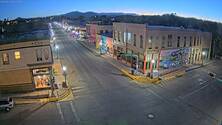Here’s a look at today’s headlines:
According to WNMU, student enrollment is down 64 students this semester, a drop of 1.7 percent. The Vice President for student affairs and academic enrollment said the number has changed from the 6.4 percent reported in August, most likely due to the fact that students were still enrolling in classes at the time. WNMU had to cancel some classes for the previous spring semester due to low enrollment, but the university did not see the same problem for the fall. WNMU sees an average enrollment of 3,500 students, including students in Gallup, T or C, and Deming; and beginning soon- the village of Columbus.
According to the US Drought Monitor, New Mexico drought conditions are at their best since late 2010. 0% of the state remains in exceptional drought, the highest level, which is down from 0.42% of three months ago, and over 16% of the state is listed as having no remaining drought conditions. The northwest corner of the state, near the Four Corners area, remains in extreme drought, but the majority of southwest New Mexico is considered moderate to severe drought, with the eastern edge of Grant County listed as abnormally dry- the lowest level of drought.
Luna County Clerk Andrea Rodriguez recently announced that the Mimbres Valley Learning Center will serve as an alternate early voting site from October 18th through November 1st. Voting at this location will be open Tuesday through Friday from 11 am to 7 pm, and Saturday from 9 to 5. October 7th is the first day a voter may cast an absentee ballot, and the last day for early voting is November 1st.
Deming High School students in the Robotics class and Computer Aided Drawing class will have a chance to work with two 3-dimensional printers over the summer. DHS purchased the technology to begin teaching students how to create their own designs to copy, and were purchased using the Carl D. Perkins Federal Grant to improve career-technical education programs and instruction for students. So far, students of the Robotics class have been able to replicate small items such as iPhone cases, chains, and a working nut and bolt. One DHS freshman stated “we need to know how to use these machines because it’s what companies are going to be using when we get out of school.” The 3-D printers use a layering process to create the requested files. The heated plastic element is sliced layer by layer, from top to bottom to create the item being replicated.

